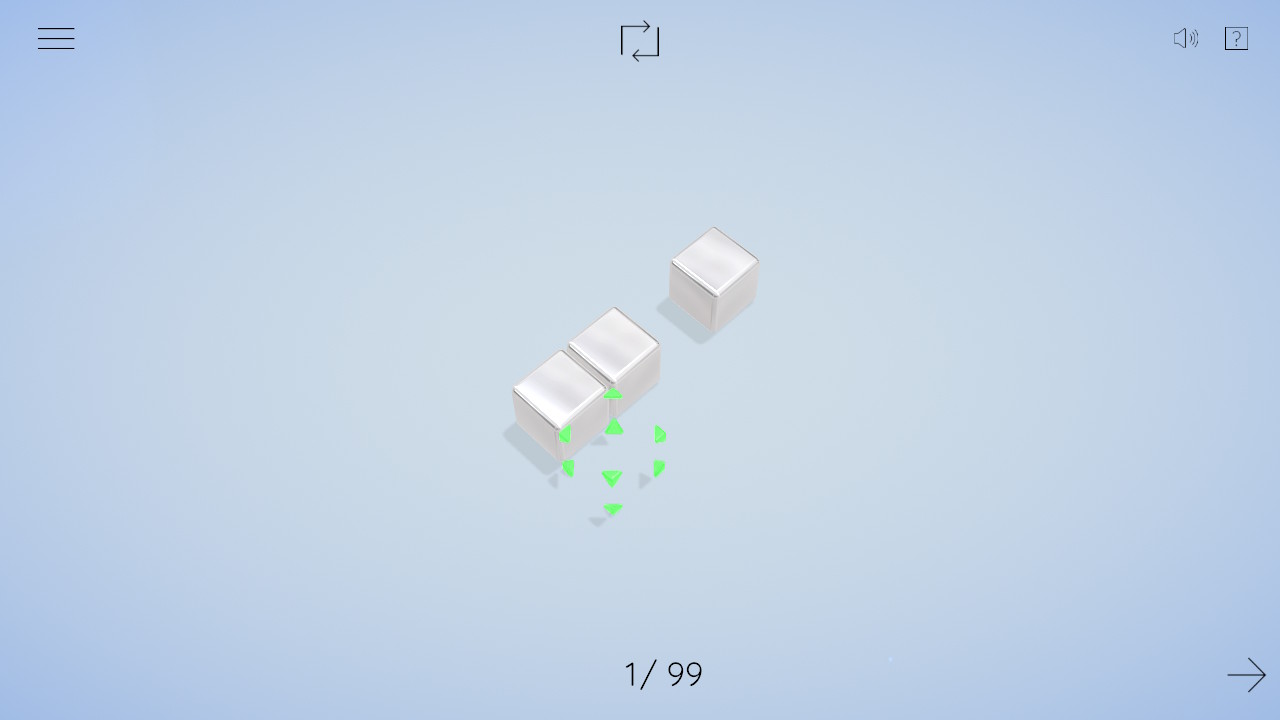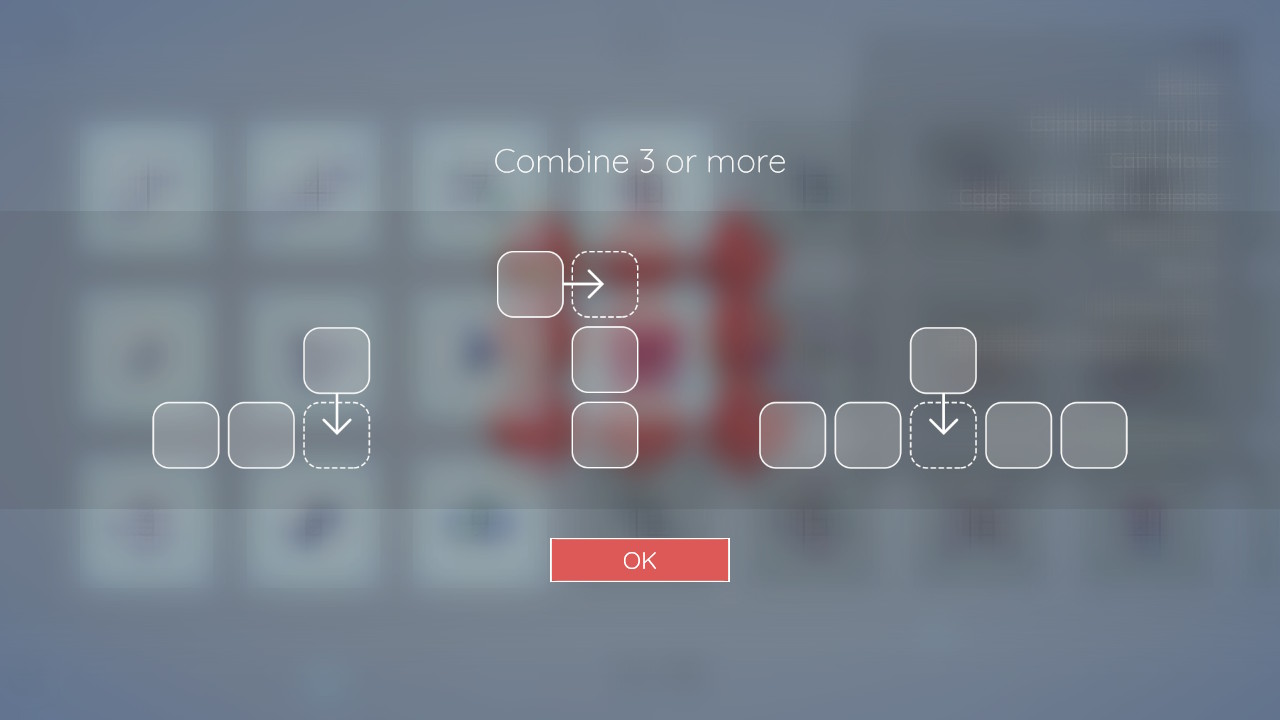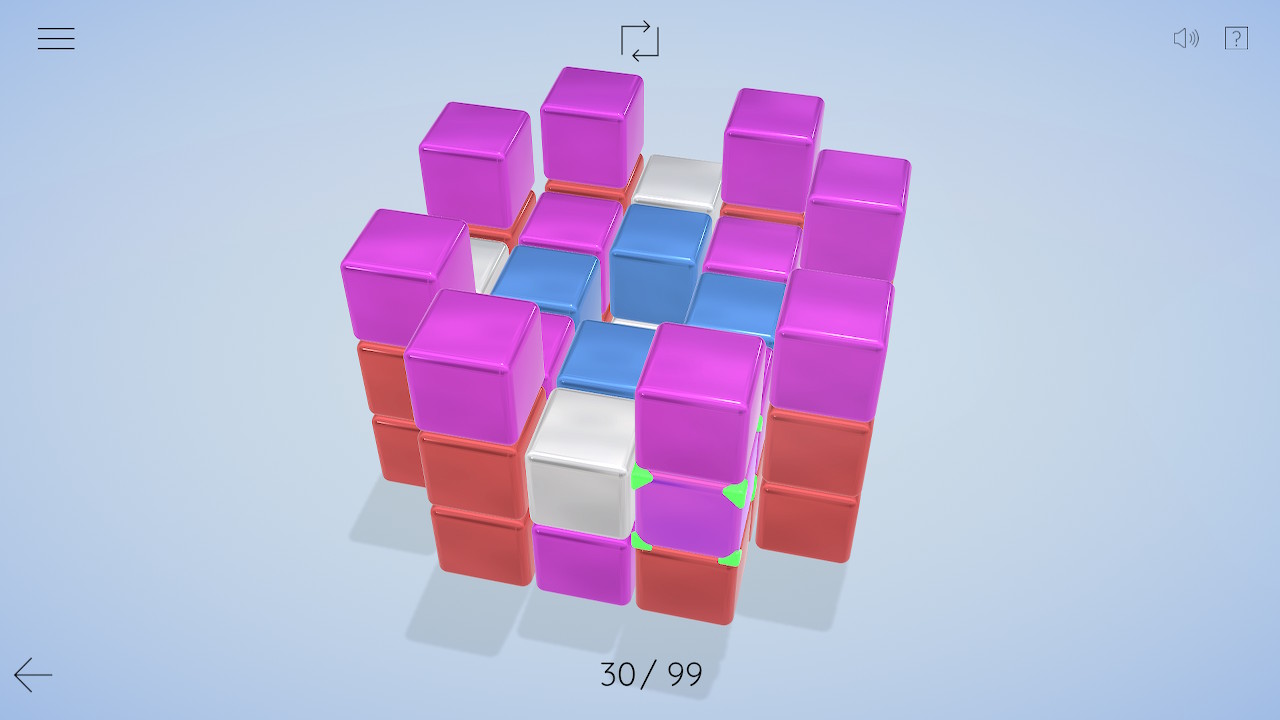Box Align
Box align is a 3d game stuck in a 2d world. Its core mechanic suffers as a result, and it doesn’t have enough redeeming features to make up for it.

Here’s the rub: you have an arrangement of cubes, some of which might be stacked. Each turn, you pick up a block, and place it somewhere else. If your move doesn’t cause a line of matching (by colour) cubes, 3 or more, then you fail. Matched cubes are removed. Remove all cubes to win.
For some reason — and I’m honestly not sure if this one’s on me or the game — I couldn’t quite work these rules out for ages, simple as they are. It didn’t seem obvious why my game was ending when it did (i.e. when nothing matched). I also didn’t appreciate that only straight-line matches counted — I kept expecting Tetris shapes to match by virtue of the 4-blocks-togetherness.

Once I fully understood the basic rules, the game was much more fun to play — at least, I wasn’t just randomly moving boxes about anymore, hoping they’d match.
There’s a handful of special cubes including those that can’t be moved, ‘jokers’ that match any colour, and locked cubes which spawn another cube when they’re matched. These definitely help to add variety to the game.
Box Align includes 99 different puzzles, to be completed in order. They can easily be cycled through once complete, which is a nice touch, although I didn’t have much of a desire to replay any levels.
The whole movement scheme is awkward — this is the first game I’ve really wanted to play as VR, even more so than Breath of the Wild. It’s just so annoying having to press all these various buttons to navigate the 3D space — in particular, I found it impossible to remember whether ZL or ZR moved the cursor up or down.
The puzzles themselves are of mixed quality: some seem like simply trial and error; others are challenging, but fair; and many demonstrate decent use of the special blocks.
But the core mechanic just ... isn’t that interesting. The same-colour matching in a row has been done many times before, and the only other mechanic, really, is deciding which blocks to pick up and move, and which to leave in place, to match later.

Every now and again, I do feel like a decent level design has been executed, and it’s quite fun to play a challenging level when you feel like you can work it out. However, all too often it’s guesswork and the premise just doesn’t lend itself very well to what should be a thoughtful, challenging puzzler.
The best levels are, ironically, those that are essentially 2d — i.e. with all cubes on one vertical level. When everything’s visible, you have a decent chance of planning ahead and thinking through your tactics. Some of my least favourite levels go as far as totally obscuring a number of cubes (one in the center of a 3*3*3 cube-of-cubes layout, for example) — what am I supposed to do here, remember the details of each cube that I can’t see right now? That’s not fun.
And, for a game where trial-and-error is so significant, where one false move can force you to have to start all over again, an ‘undo’ feature would be a very welcome addition. Time and again, I found myself making a move, then wanting to replay it to see exactly what I’d done so I could plan out the remaining moves — this is just not possible.
Apart from the core mechanic, though, there are a few things that annoy me about the game:
- You can move your ‘cursor’ in all six directions, but it’s not limited to the cubes available, so you can move it way above the highest cube. Which is pointless.
- You can be in a fail state — e.g. just one cube remaining — but the game doesn’t end. You have to make a final ‘failing move’, even though there’s no other option.
- There’s a notable pause between matched blocks disappearing and the cursor being movable again.
- The camera is … weird. You can’t move it fully around and it sometimes feels like it’s working against you, like it has a mind of its own. You can’t zoom, although adding yet one more control probably wouldn’t be great, either! As I said earlier, VR would offer a much nicer experience here!
- When you pick up a cube, its colour gets ‘tinted’ as an indication you’re holding it. However, sometimes a cube gets tinted to the exact same colour as others, leading to confusion if you momentarily forget what’s going on. Thing is, there isn’t even really a need to indicate you’re holding the cube: you can see when you move the cursor, and no harm can come of that. So not tinting it AT ALL would be the better move here…

Verdict
😠
Box Align is not great, and it becomes more and more frustrating the longer I play. The later levels, of course, are supposed to be more difficult, but they seem to be disproportionately awkward because they increasingly highlight the game’s flaws.
I played & reviewed Box Align as part of the #IndieSelect initiative spearheaded by @IndieGamerChick. It meant that I received a copy of the game for free; the game would have cost £1.79 otherwise.
The cheap price could possibly redeem it, but not when you take into account something like Baba Is You, another turn-based puzzle game, also full of (this time, welcome) frustration. Baba Is You is six times the price of this title, but I feel like it’s way, way ahead of it, and far better value.
I would not recommend Box Align for anyone other than the biggest puzzle-game fan; even then, I would suggest first trying out the downloadable demo for Windows, if possible.